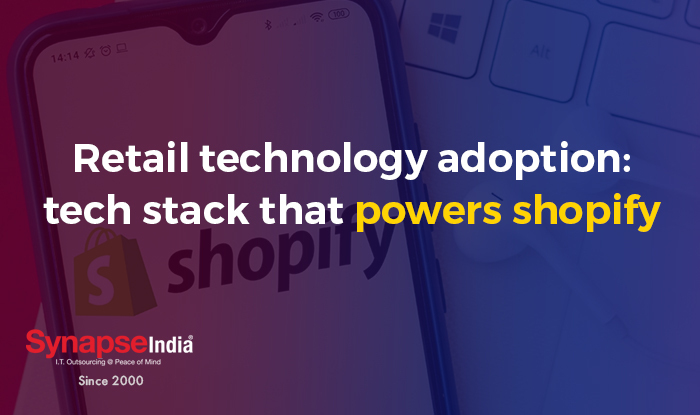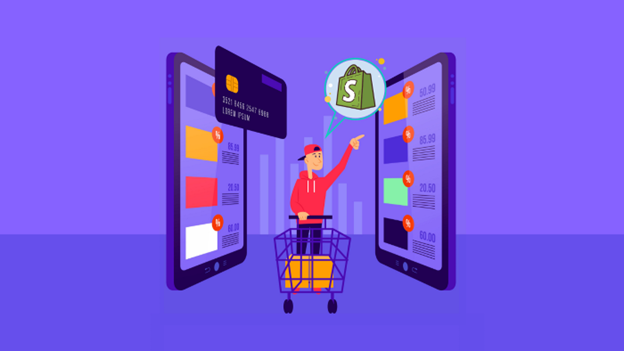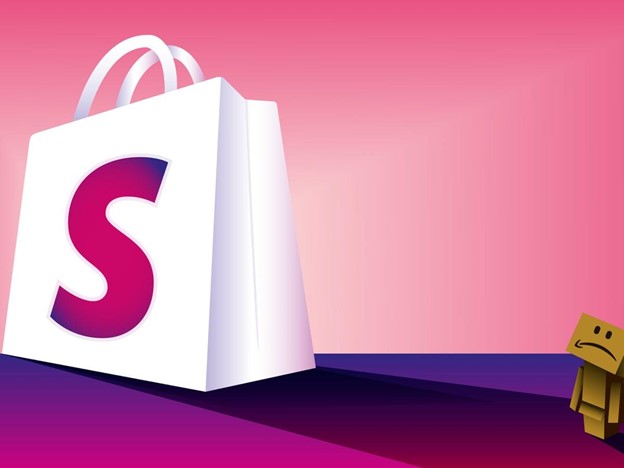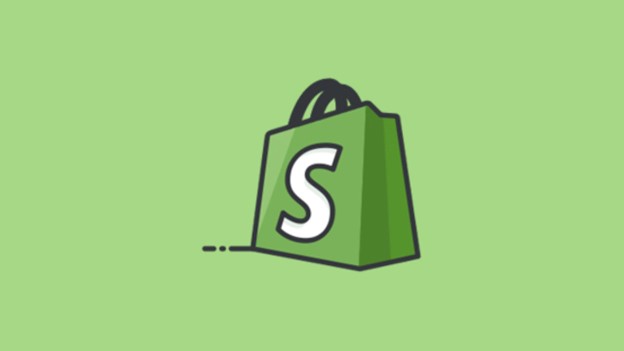 05 May 2022
05 May 2022“A driving element behind the achievement of Shopify (and the organizations it serves) is its tech stack. The tech stack comprises all the digital services used to make and run a platform..”

Shopify is a multi-channel online business platform utilized by more than one million ecommerce entrepreneurs. It permits brands to make an internet based store and sell items through various mediums. Merchants of all sizes influence the platform to drive sales and at its pinnacle, Shopify addresses as many as 80,000 requests per second.
A driving element behind the achievement of Shopify (and the organizations it serves) is its tech stack. The tech stack comprises all the digital services used to make and run a platform. This information environment furnishes merchants with all the instruments they need to launch, alter and grow their online store.
Shopify is a critical component of the ecommerce web development services and below we breakdown Shopify's tech stack in detail.
At present, Shopify has around 100 applications and technologies in its tech stack. The most famous applications incorporate Shop: Delivery and Order Tracker, Shopify - Ecommerce Business, Logo Maker: Design and Create, Scratch Photos, Hatchful - Logo Maker, Shopify Point of Sale (POS), Frenzy - Buy Sneakers and More, and Shopify Ping.
There are almost 3.5 million application downloads each month from the Shopify solutions stack, right around 3 million of which are of Shop: Delivery and Order Tracker across iTunes and Google Play. The Shopify - Ecommerce Business application gets around 300,000 downloads a month.
Top digital instruments incorporate Google Analytics, HTML5, JavaScript, Oberlo, Facebook Shops, Instagram Shopping, Viewport Meta, Apple Mobile Web Clips Icon, Exchange, Burst, and Hatchful.

There are likewise as much as 4,000 applications that can coordinate directly with the internet business platform. Also, Shopify has a few free built-in tools in its innovation framework, including a logo creator, a QR code generator, a business card producer, a gift certificate template, a privacy policy generator, and a profit margin calculator.
Internally, Shopify involved MySQL as a relational database since its earliest days. The help offers cloud-native applications through SQL (Structured Query Language), which is the language of getting to and managing content inside a data set. However, by 2014, MySQL couldn't store the entirety of Shopify's information. That is the point at which the platform started sharding its information into many more modest data sets.
Shopify began involving Memcached for memory-reserving and Redis for key-value stockpiling and ques, alongside a few different data sets. For a while, the sharding approach worked, however individual blackouts among the databases ended up causing a few interruptions.

Throughout the most recent couple of years, Shopify has been progressing from shards to pods. Each pod is a detached area with its own datastores, and it very well may be set up in any region utilizing deployment applications like Kubernetes and Docker.
The pod procedure has assisted Shopify with keeping away from worldwide outages. At present, the stage has more than 100 pods and hasn't confronted any significant disturbances since executing them. Concerning load balancers, Nginx, OpenResty, and Lua are go-tos.
The tech stack of Shopify Admin started with HTML layouts, Prototype JavaScript Framework, and jQuery. Then, it progressed to Batman.js (Batman JavaScript) and afterward bounced back to basic HTML and Prototype JavaScript. As of late, Shopify Admin arrived on React and TypeScript. The current system doesn't depend on a server to share data and is strikingly productive at getting to assets.

Shopify Plus is a top-rated ecommerce website platform offering an expansive scope of answers for traders, including Enterprise Online Store. The product permits you to plan your web store and modify your checkout experience utilizing HTML, JavaScript, CSS, and Liquid. You can likewise utilize Shopify Flow and Scripts to customize item suggestions in light of your clients' behaviors.
Another fundamental Shopify solution is Multi-Channel Ecommerce. It assists you with extending your viewpoints to selling on Amazon, Facebook, Instagram, Pinterest, Snapchat, and eBay. With Launchpad, you can automate your business, promotions, and missions across all channels. There is likewise International Ecommerce, which assists you with reaching worldwide crowds with different stores and monetary forms.
Shopify POS permits you to move between online and in-store retail while working in omnichannel marketing. This tech solution incorporates adaptable checkout, inventory management, limitless classifying, nearby pickup and delivery, completely matched up client profiles, coordinated loyalty programs, hassle-free returns and trades, and bound together reporting. Other Shopify Plus solutions incorporate Headless Ecommerce, Wholesale, and B2B Ecommerce.
Shopify Plus likewise matches up with many certified application technologies that work consistently with the stage. For affiliate marketing, you can utilize Refersion. For change optimization, Shopify synchronizes with Justuno, LimeSpot, Privy, and Nosto. There is Loop and Returnly for overseeing returns and trades.

For content and visual merchandising, you can leverage Findify, InstantSearchPlus, Klevu, SearchSpring, and Shogun. If you're using UGC (user-generated content), you can implement Annex Cloud, Okendo, Pixlee, PowerReviews, and Yotpo. Merchandisers who want to create loyalty and rewards programs can download Emarsys, Smile.io, LoyaltyLion, or Swell.
Shopify Plus is a necessary piece of the ecommerce development services we offer at SynapseIndia. Assuming your business sees a high volume of online deals, you'll require a strong, adaptable, secure cloud-based platform. Synapseindia can make a Shopify Plus site for your enterprise that is custom-made to your image's item contributions, client base, existing marketing strategy, and objectives.

 23 Jan 2015
23 Jan 2015
